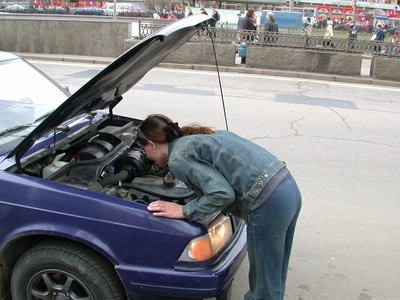
The throttle body in car a provides one of the modern features found in today's cars to help with fuel efficiency. In addition to keeping fuel flow to the engine restricted to only what it actually needs, the throttle body also houses sensors telling the car computer how the fuel-air mixture is working. Unfortunately, when this unit becomes dirty it can also cause car performance problems --- especially in idle and low rpm. Testing the vehicle to find this problem requires a few tests and computer readings.
Turn on the car, and let it warm up. Drive it around a bit so the engine is warm. Stop the car, and let it idle. Allow the car idle to level out to its lowest state.
Listen to the car operate to determine whether the engine is struggling to maintain a constant idle (rpm will fluctuate in idle). Try to trigger the "Check Engine" light warning by getting the engine to die out when it should continue to idle. Lower the idle if necessary by manually adjusting the throttle cable if your car has one. Resist the urge to press on the gas when it begins to buck and fail. Turn off the car when the "Check Engine" light comes on if it happens before the car dies.
Reach underneath the steering wheel, and open up the OBD connection panel. Plug in your OBD-II scanner to the connection. Put your car keys back in the car ignition, and turn it to the "On" position. Allow the scanner to read the car computer and confirm whether the problem lies with the throttle body sensor. Turn the car off again, and interpret the codes sent to the scanner.
Use the data from the scanner confirming the problem lies in the throttle assembly, and take the car to a mechanic. Have the mechanic clean the throttle body to remove all burned carbon residue and dirt in the assembly. Pick up the car again, and confirm it idles correctly.